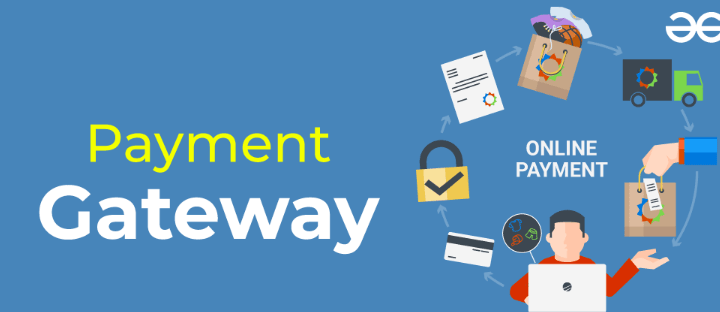How Payment Platforms are Transforming the Digital Marketplace

An Overview of Virtual Economies in the Digital Age
The fabric of virtual economies is interwoven with our digital lives. It reflects a significant shift from the physical to the digital realm, where digital goods and services are traded with the same enthusiasm as their tangible counterparts. Unlike physical marketplaces shaped over centuries, virtual economies are a product of rapid digital innovation, enabling unprecedented ease of transactions across borders and time zones. At the heart of these transactions is the need for robust payment platforms that manage the complex, ever-growing web of virtual sales—herein, the role of a specialized payment gateway for online gaming becomes crucial, assuring users of secure and frictionless payment experiences.
The growth of the virtual economy is tightly coupled with the confidence users place in the digital payment systems responsible for facilitating their transactions. To nurture this trust, these systems must ensure security, efficiency, and adaptability to many virtual environments and currencies. As such, the digital economy is not just a place of trade but a complex ecosystem where diverse elements, from in-app purchases to online subscriptions, are seamlessly managed by sophisticated payment gateways that never sleep.
Mapping the Payment Gateway Ecosystem
Much like a bustling city, the digital marketplace is built on an intricate infrastructure where payment gateways stand as essential nodes that enable the flow of commerce. These digital checkouts do more than process transactions; they connect consumers, businesses, and financial institutions, ensuring that every click-to-purchase is securely and swiftly handled. The goal of a payment gateway is manifold: to integrate smoothly with platform environments, be they small online shops or massive digital marketplaces, all while providing the transaction security that users demand and deserve.
The scale and complexity of payment gateways can be daunting, yet they are increasingly approached with innovative solutions that make operations seamless, such as cloud-based technologies and advanced APIs. Businesses continually seek ways to leverage these trends to stay competitive and cater to the savvy digital consumer.
The Impact of User Experience on Online Transactions
The design and execution of an online payment experience can decide between a completed sale and an abandoned cart. High-quality user experience (UX) is integral, not just for aesthetic appeal but as a driver for consumer satisfaction and business growth. Users encounter several touchpoints during their interaction with online payment systems—from selecting items for purchase to the final transaction confirmation. Each stage must be optimized for clarity, speed, and ease of use. Research has consistently pointed out that a smooth checkout process can exponentially increase conversion rates and foster customer loyalty.
For global platforms, the challenge intensifies as they cater to diverse audiences with different preferences and expectations. Understanding cultural differences, supporting local currencies, and offering multiple payment methods are critical facets of an inclusive user experience. This global mindset enriches the customer’s journey. It enables online platforms to tap into new demographics and markets with the promise of a payment system that speaks their language, figuratively and literally.
Security Concerns and Solutions in Digital Payments
In the internet’s vast and varied landscape, digital payments are prime targets for nefarious activities. Security concerns must be proactively addressed to defend against data breaches, identity theft, and fraud. Therefore, payment gateways have become fortresses with state-of-the-art security measures to protect sensitive financial information. These include utilizing end-to-end encryption to shield data in transit, consistently updating security protocols to combat new threats, and rigorously adhering to industry standards.
Deploying best practices such as encrypted data storage, tokenization, and real-time fraud detection systems goes a long way in building consumer confidence. Furthermore, introducing other sophisticated security solutions, including biometric authentication and artificial intelligence-driven anomaly detection, sets new benchmarks for safety in digital transactions. The most successful payment platforms balance the ease of use with the complexity of security, effectively becoming the invisible guardians of the virtual financial world.
The Role of Cryptocurrency in Modern Payment Systems
Cryptocurrency has undeniably become a game-changer in digital payments, with Bitcoin, Ethereum, and other digital currencies pushing the frontiers of what’s possible in the financial sector. This novel form of currency introduces a paradigm shift with qualities such as decentralization, offering freedom from traditional banking structures, and facilitating peer-to-peer transactions without intermediaries. The potential advantages include reduced transaction fees, enhanced transactional privacy, and borderless payments, making cryptocurrencies an attractive option for online transactions.
Amidst this backdrop, traditional financial systems are starting to acknowledge the value that cryptocurrencies bring to the table. Integrating cryptocurrencies into existing payment systems is a complicated endeavor, requiring balance and foresight. This adds depth to the discourse on how cryptocurrency continues to reshape and redefine the financial landscape. The future will likely be one where fiat and digital currencies coexist and complement each other within payment platforms, offering users unparalleled flexibility and choice.
Integrating Payment Solutions for Developers and Businesses
For developers and businesses, integrating payment solutions into their applications and platforms is a critical task that poses both technical and strategic challenges. APIs have become the standard by which payment solutions offer their services, providing a set of protocols and tools for building application software and integrating payment processing features seamlessly. The smoother the integration process, the quicker businesses can offer their services to the market, which is increasingly important in our fast-paced digital world.
Read also The Benefits of Small Business Servers
Choosing the right payment platform can be as significant as the product or service. Features such as multi-currency support, multiple payment methods, and advanced fraud protection are essential requirements in today’s competitive market. However, how these features are often integrated and presented through a user interface determines the success of a payment solution. From a business perspective, platforms that offer transparent fee structures, reliable customer support, and robust analytics are likely to stand out from the competition, thus encouraging developers to integrate with them.
The Future of Payment Platforms: Predictions and Innovations
The trajectory of payment platforms suggests an exciting future characterized by innovation, inclusion, and adaptability. As users demand more streamlined and secure payment methods, platforms offering mobile-first solutions, instant settlements, or even the potential to pay via biometric identification will likely thrive. Blockchain technology, which promises more transparency and decentralization, is expected to greatly impact how payments are shaped in the future and offer a safe platform for new payment solutions.
It is anticipated that new degrees of ease and security will result from converging traditional payment systems with cutting-edge technologies like machine learning, predictive analytics, and natural language processing. Companies willing to embrace these innovations and invest in continuous improvement will likely set the pace for the future and drive the entire digital economy forward. Payment platforms are no longer just facilitators of commerce; they are quickly becoming their architects, shaping the marketplace to be more responsive, inclusive, and secure for users worldwide.




